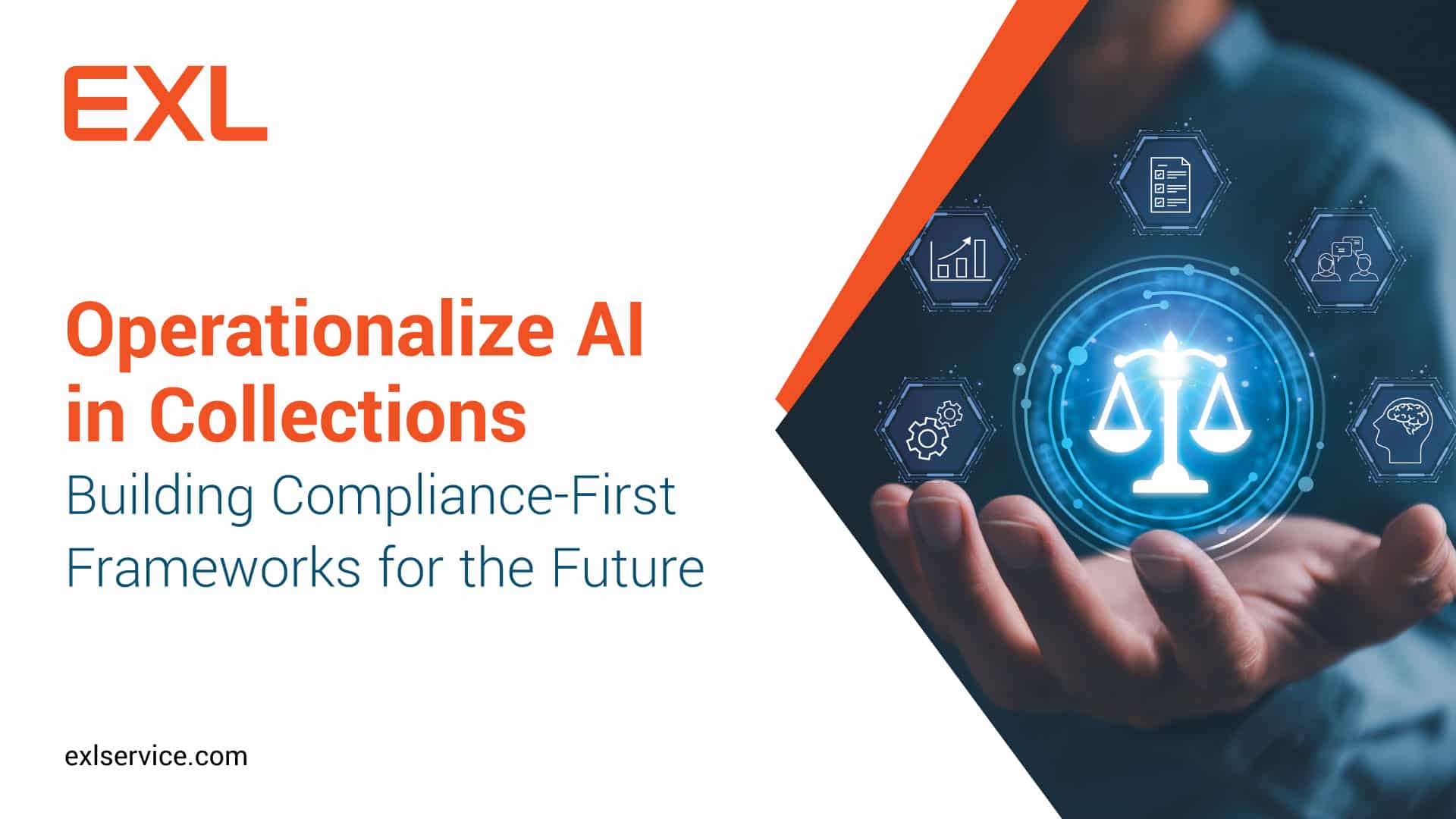
Operationalize AI in Collections | Building Compliance-First Frameworks for the Future
Is your AI strategy designed to accelerate performance—or undermine compliance?
Artificial Intelligence (AI) is transforming debt collection processes at an accelerated pace, offering both opportunity and complexity. This article explores how to operationalize AI in collections to drive efficiency while maintaining a rigorous compliance posture. It examines the intersection of AI governance, phased implementation strategies, bias mitigation, and privacy best practices to ensure that innovation strengthens—rather than undermines—organizational integrity.
The Current Landscape: Opportunity Meets Obligation
Debt collection has entered a period of rapid technological change. AI and machine learning tools promise to enhance recovery rates, streamline operations, and improve consumer experiences. Yet these advancements come with significant challenges: ensuring data privacy, mitigating algorithmic bias, maintaining compliance with evolving regulations, and safeguarding the reputation of financial institutions. Understanding how to operationalize AI in collections is essential for navigating this complex environment.
The Foundation: Purpose-Driven AI Strategy
Operationalizing AI in collections begins with a clear purpose. Organizations must determine whether AI tools will primarily serve client-facing functions, such as negotiating payment terms or supporting self-service portals, or internal processes like agent support, auditing, and predictive analytics. This distinction is critical because it shapes the governance, compliance, and risk management frameworks that must be applied.
Client-facing AI applications, for instance, demand rigorous oversight to prevent unfair treatment or bias in consumer interactions. Internal AI systems, while less publicly visible, must also adhere to strict standards of transparency, auditability, and data minimization.
Model Governance: A Non-Negotiable Pillar
Effective AI adoption in debt collection hinges on robust model governance. Without clear accountability structures and transparent decision-making processes, AI systems risk perpetuating systemic bias, violating regulatory requirements, and damaging organizational credibility.
Model governance should include:
- Documenting the training data sources and ensuring they are free from protected attributes like race, gender, and zip code.
- Regularly auditing models for performance consistency and ethical behavior.
- Implementing clear escalation protocols for exceptions or anomalies detected in AI outputs.
As organizations advance their digital capabilities, governing models effectively ensures that AI becomes a competitive advantage rather than a liability.
Bias Prevention: Building Fairness from the Start
Bias in AI models is not merely a technical defect; it is a serious compliance and reputational risk. In the debt collection context, even seemingly neutral attributes can serve as proxies for protected characteristics, leading to disparate impacts on vulnerable populations.
Bias mitigation must begin at the model design stage. Training data should be sanitized to eliminate sensitive attributes. Statistical fairness tests should be incorporated during model validation phases. Ongoing monitoring must be performed to ensure no drift toward biased outcomes.
“Bias prevention must be built into your models from day one to avoid compliance disasters later,” emphasized Adam Parks.
Privacy and Data Protection in an AI-Driven World
Privacy regulations like the GDPR and CCPA have reshaped the data landscape. In collections, where sensitive financial and personal information is involved, the stakes are even higher.
Operationalizing AI responsibly requires:
- Ensuring data minimization principles are adhered to—collect only what is necessary.
- Implementing encryption, access controls, and secure storage for all personal data.
- Guaranteeing that AI models themselves do not inadvertently leak or infer private information.
Privacy impact assessments (PIAs) must be integrated into the deployment of all AI systems to preemptively identify and mitigate risks.
Phased Execution: Building Confidence Gradually
One of the most effective strategies for deploying AI in collections is phased execution. Rather than attempting a wholesale transformation, organizations should:
- Pilot AI tools on a limited subset of accounts.
- Establish clear control groups to measure incremental performance lift.
- Solicit client feedback early and often to fine-tune processes.
This measured approach not only limits operational risk but also helps build trust among internal stakeholders, clients, and consumers.
Client Communication and Transparency
Clients expect transparency regarding the technologies used to manage their accounts. Organizations must be prepared to explain:
- How AI models are trained and governed.
- What data sources are used.
- How fairness and privacy are safeguarded.
Providing clients with model governance summaries, risk assessments, and auditing procedures enhances credibility and can serve as a key differentiator in a competitive market.
Future Trends: Adaptive AI and Dynamic Compliance
Looking ahead, the role of AI in collections will only expand. Adaptive AI systems—those capable of learning from new data without human retraining—will become more common. However, dynamic systems introduce new governance complexities.
Compliance frameworks must evolve to accommodate continuous learning while maintaining rigorous oversight. Organizations will need to invest in dynamic auditing capabilities, real-time bias detection, and automated compliance reporting.
Conclusion
The successful operationalization of AI in collections depends on a deliberate, compliance-first approach. Organizations that prioritize governance, privacy, bias mitigation, and phased execution will be well positioned to harness AI’s transformative potential without sacrificing consumer trust or regulatory integrity. The industry must rethink its approach: innovation and compliance are not competing priorities—they are mutually reinforcing imperatives.
Author Bio
Mike Walsh is the Vice President of Sales Engineering and Client Success at EXL. With extensive experience in operationalizing AI solutions in regulated industries, he focuses on driving client outcomes through innovation, compliance, and strategic execution.



